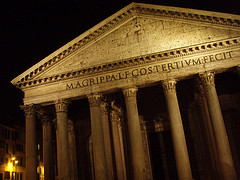 Planning a trip to Europe can seem like a daunting task for first-time visitors or travelers visiting multiple cities during one trip. But it doesn't have to be. Here are some tips to get started.
Planning a trip to Europe can seem like a daunting task for first-time visitors or travelers visiting multiple cities during one trip. But it doesn't have to be. Here are some tips to get started.
Get your passport
Beyond simply needing a passport, some countries require that the passport not expire within six months of the last day you are in the destination country. It takes a few weeks to receive a passport after applying. So if you need one, take care of that first. For a quick turnaround, the application process can be rushed for an extra fee. For details, visit the U.S. Department of State website.
Visualize your ideal trip
If you're thinking of taking a rip to Europe, you likely already have a picture in mind of how you want your trip to be. Perhaps you wish to explore Renaissance architecture, have candlelit dinners in romantic cafes, see a performance at a historic opera house, or sample great food and wine. Do you prefer to stay in family-owned B&Bs and picnicking in the park? Or are 5-star hotels and dining in chic, new restaurants more your style?
Do you see yourself hitting all of the main tourist attractions in Europe or would you prefer in-depth, private tours led by scholars?
Take some time to consider what you want from your trip, your interests and the experiences you wish to have. This will help to inform where you decide to travel.
Determine the best time to go
Once you've decided where to go, you'll want to consider when to go.
When cost is top of mind, generally, the best rates are to be found in the winter, as long as it's not during the holiday season. Deals abound during the dead weeks before and after the holidays, such as between Thanksgiving and Christmas or in January. It's also the best time for avoiding the tourist crowds, but, unfortunately, not so great for the weather.
You will also find some favorable travel rates in the spring and autumn months, when kids are in school and fewer families are traveling. These seasons often offer the nicest weather in Europe, though some areas see a lot of rain during this time.
The summer season, especially during August, are the busiest for European travel, the most expensive and the hottest. Also, many Europeans, particularly the French, go on vacation during August. So smaller hotels, restaurants and some activities, such as attending an opera, may not be available to you in August. However, if you enjoy outdoor music festivals in unique venues, than the summer season is for you.
Consider the number of travel days you have
With so much to see and do in Europe, the challenge in creating an itinerary is making the best use of the short amount of time you have to travel. While filling your itinerary with many activities may give you great photos and stories to tell, it also may leave you feeling too exhausted to enjoy them.
When determining how many days to schedule for your trip, consider the distances you must travel between the cities you wish to visit. It may not be worth the effort to travel 4, 5, or 8 hours between cities if you only have a week for your trip. Plus, there's recovering from jet lag to factor into the equation.
Spending more days in each place, rather than hopping from city to city, allows you to avoid the hassle of unpacking and repacking as well as the exhausting, yet enjoyable aspects of traveling abroad.
Keep total trip costs in mind
When planning your trip, determine the total amount you wish to spend. Don't be dismayed by costs for individual items such as flights or too overjoyed about cheap deals. While some airfares may make you cringe, a trip package with hotel, sightseeing tours and extras included can offset the cost of your plane ticket. Also, transportation between cities, such as trains or car rentals, can increase the total amount that you spend on your trip, even when it seems you got a good deal on other components of the trip.
Place more emphasis on finding value rather than cheapest deals. Ultimately, in the years to come, it will be those special experiences and whether the overall trip was a good one that you will remember the most.
Traveling between cities within Europe
How will you get around once you arrive in Europe? Flights, rail, car? In many places in the U.S., the only way to get around is by car. However, most of the major cities of Europe have extensive public transportation systems within the cities as well as between them. What's more, many of these cities such as London, Paris, and Florence are easily walkable. A car is generally not necessary unless you plan to tour the countryside.
Preventing Itinerary Mishaps
Many seemingly small details impact how well your trip goes. If you have a layover, will you have enough time to make it to your connecting flight? If your flight lands at 8 am, will you be able to check into your hotel to freshen up right away, and recover from jetlag? How long will it take you to get from your hotel each day to the sights you wish to visit? Are hotel renovations in progress, causing noise and a mess in the lobby and hallways?
Get as much information about your destination as possible when planning your itinerary to prevent the accumulation of tiny annoyances from derailing your trip.
Next step: Get itinerary planning help.